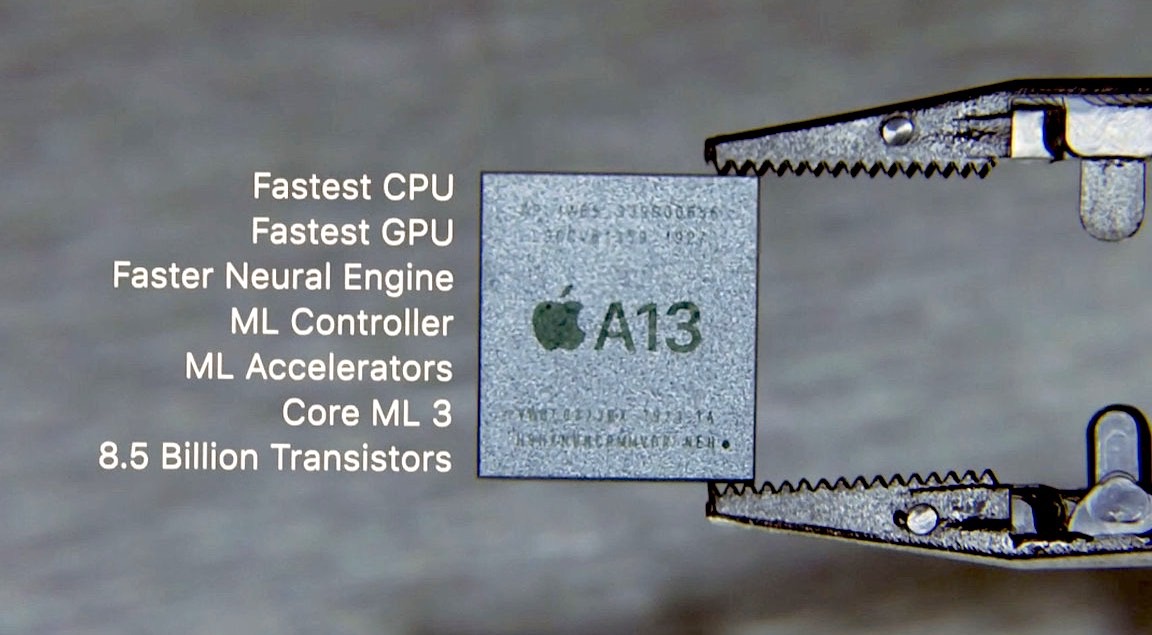Forewarned is foreARMed.
Sunday, June 21st, 2020
On June 6, 2005, Apple announced that the computer maker would transition to Intel microprocessors in their desktops and laptops, replacing the Motorola PowerPC chip series that had run Macs since mid-1992.
On August 7, 2006, they announced the transition was complete.
On January 9, 2007, Apple announced the iPhone, a hand-held computing device (and yes, music player and phone.) It ran not on PowerPC or Intel, but on an Apple-designed system-on-a-chip (SoC) that uses what’s called ARM architecture, a reduced instruction set architecture first designed to run British Acorn microcomputers.
The ARM architecture has expanded its influence and reach to where today companies create ARM-based systems that combine multiple cores of processing, both CPUs and the graphics-focused GPUs.

The chip that’s in my iPhone, probably yesterday’s news, held by evil robot pincers.
If you have an iPhone, iPad, or Apple Watch, you have an ARM SoC designed by Apple running in there at remarkable speeds, sipping battery power, and getting things done for you silently. It is a key to the success of those devices, and Apple has become very good at designing and refining these things.
In fact, if you have an Android phone, it too probably has an ARM architecture SoC inside. There are those that say these “reference designs” aren’t as fast or as power-efficient than Apple’s take on the architecture, but the fact that they get the job done at all in a thing that small is a tribute to the robustness of the ARM approach.
ARM systems-on-a-chip are also running the two tiny Raspberry Pi linux computers in our house. They are powerful and sip power.
So. Tomorrow, Monday June 22, 2020, Apple is “widely expected to announce” (if you run that through your secret decoder ring, you get “the rumor sites are really almost 100% positive about this”) that they will transition—somehow—their desktop and laptop machines—their Macs—from Intel chips, which they of course have to pay Intel for, to Apple-designed ARM-based systems-on-a-chip. That will be a profound transition, if true.
It might mean…well, there are sites right now filled with what it might mean. We could just tune into Tim Cook’s 1 pm eastern Keynote talk and find out for sure.

